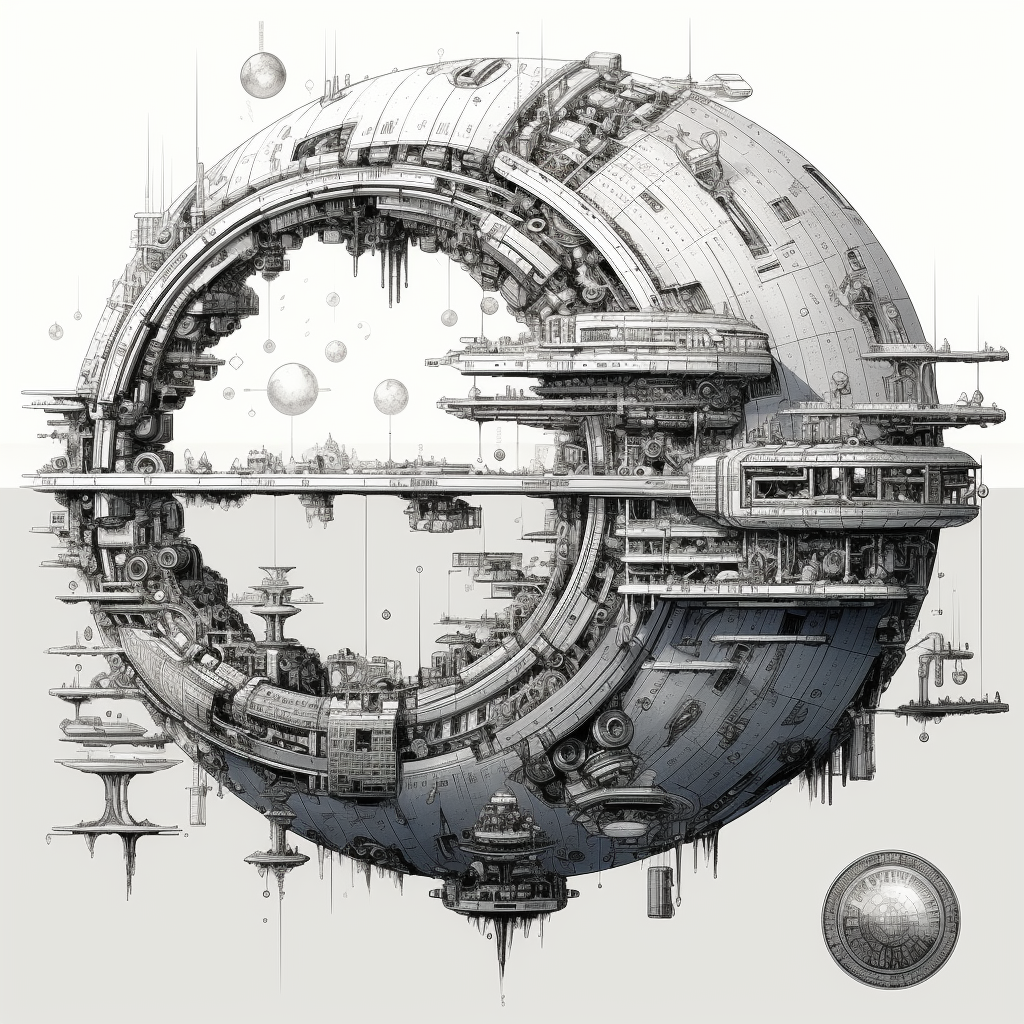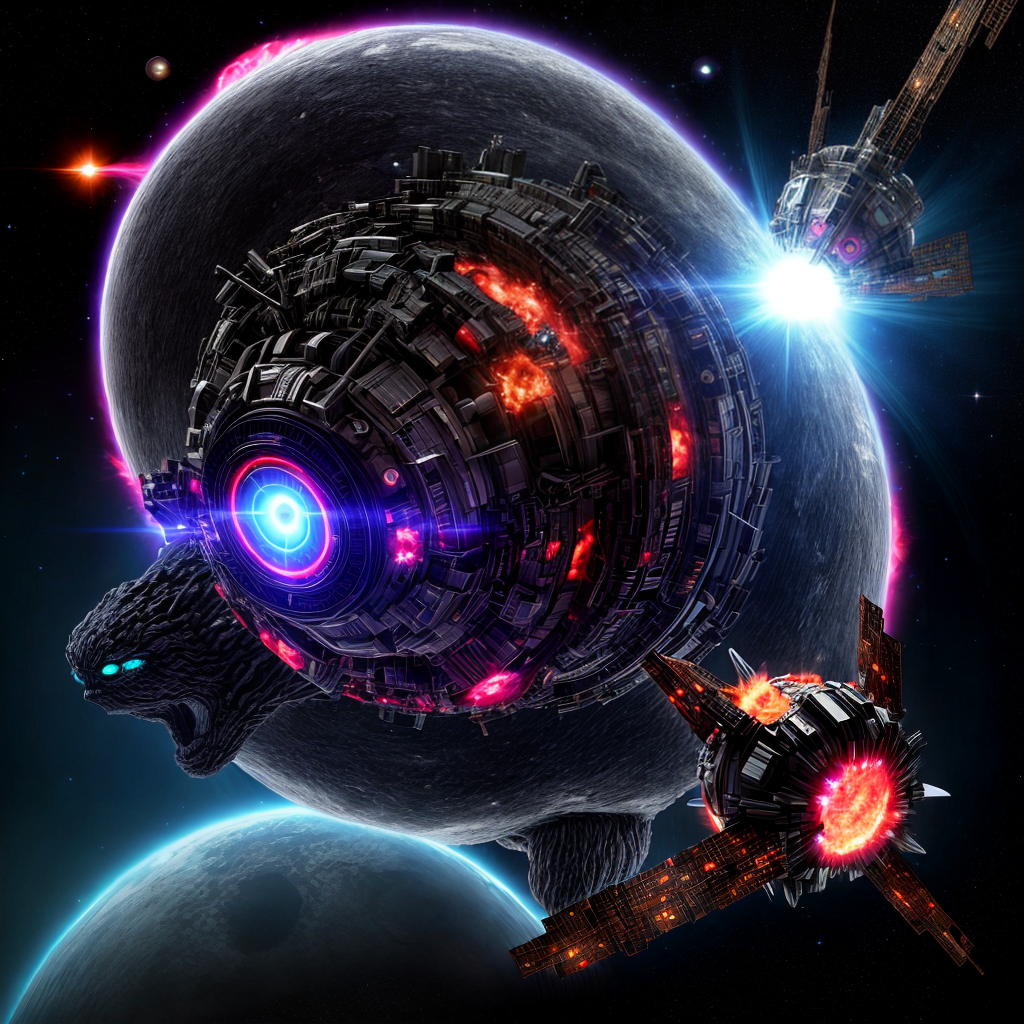In the heart of cosmos, amid an array of twinkling stars and distant nebulae, a lone figure stood out – an extraordinary creature, a testament of brilliant imagination where an asteroid, fire, and a space station coalesced into one sentient being. Its body was a rugged, rocky formation, bearing an uncanny resemblance to the celestial rocks that crash violently upon earth, sowing seeds of extinction. Yet, there was a hint of a far more advanced civilization in it: the body was meticulously constructed with segments neatly carved as if it was a space station. It boasted superior engineering with gleaming, metallic arms and legs enhancing its anthropomorphic grit.
Embers enveloped the creature like a furious, flaming aura. It didn’t menace or intimidate, but instead, appeared ethereal, painting a fascinating picture of impending catastrophe, while paradoxically offering a sense of serene destruction. It was as if this creature was a burning asteroid, seemingly precarious but nonetheless composed. It hurtled through the vast void of space, radiating disarray within tranquility.
Yet, amidst all the chaotic beauty, the creature was serene, utterly undeterred by the imminent disaster it symbolized. It was lost in a melodic oblivion, personified by the retro-styled, oversized headphones wrapped around its asteroid-like head. Music was its solace and escape. The sounds of destruction were overpowered by celestial harmonies, and the creature, in an almost human-like fashion, reveled in this symphony.
So, it traversed alone, a celestial mariner each footstep reverberating in the silent cosmic theatre. As a beacon of fiery destruction, it captured the essence of cataclysmic dread while basking in an oddly comforting solitude. A emblem of disaster, yet an epitome of tranquil existence, leaving stardust trails in the passages of the cosmos.
Interesting Facts:
1.
Asteroids: While many asteroids lie in the asteroid belt between Mars and Jupiter, some stray closer to Earth and are called Near Earth Objects.
2.
Fire: During space travel, fire doesnt burn with the usual orange flames but flickers blue as the gravity levels are low to non-existent.
3.
Space Station: The International Space Station cruises at a speed of five miles per second, circling the Earth approximately every 90 minutes.
4.
Disaster: The term disaster originates from the Middle French desastre, which essentially means ill-starred, pointing out to calamity marked by the stars.
5.
Space: Every minute, the Earth is getting around 20Kg lighter due to the constant loss of hydrogen and helium gases into space.
Poem:
Asteroids dance in distant mirth,
In space’s void, far from Earth.
Beneath skys dome, fires gleam blue,
On the station, a life anew.
Disasters marked by stellar fate,
In the vast, the Earth does gyrate.
Weightless whispers escape our sphere,
In this cosmos, we disappear.





